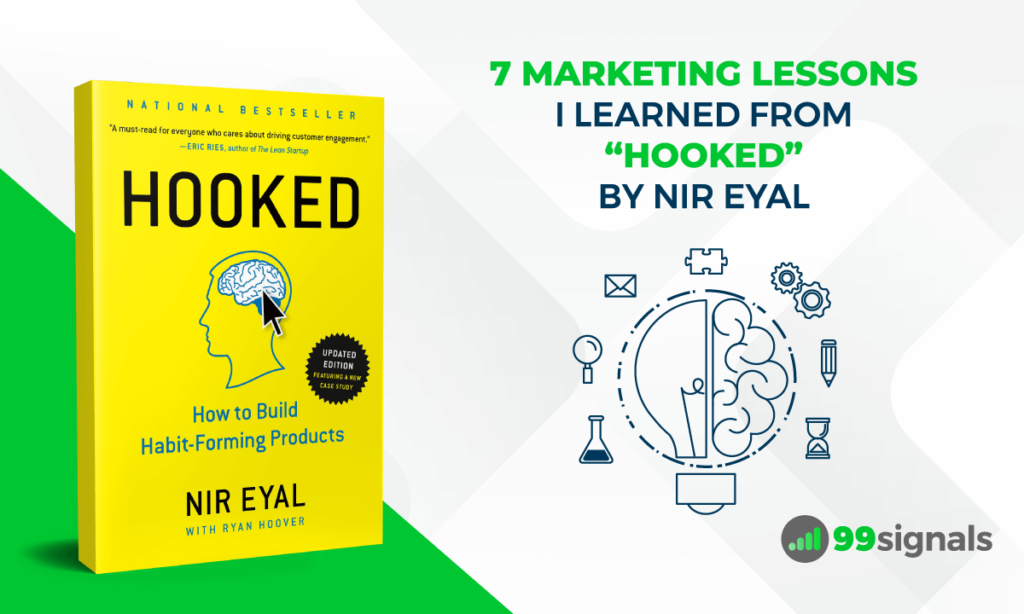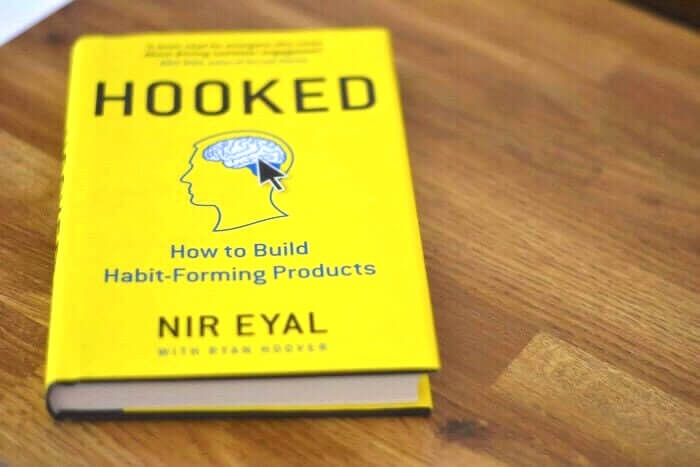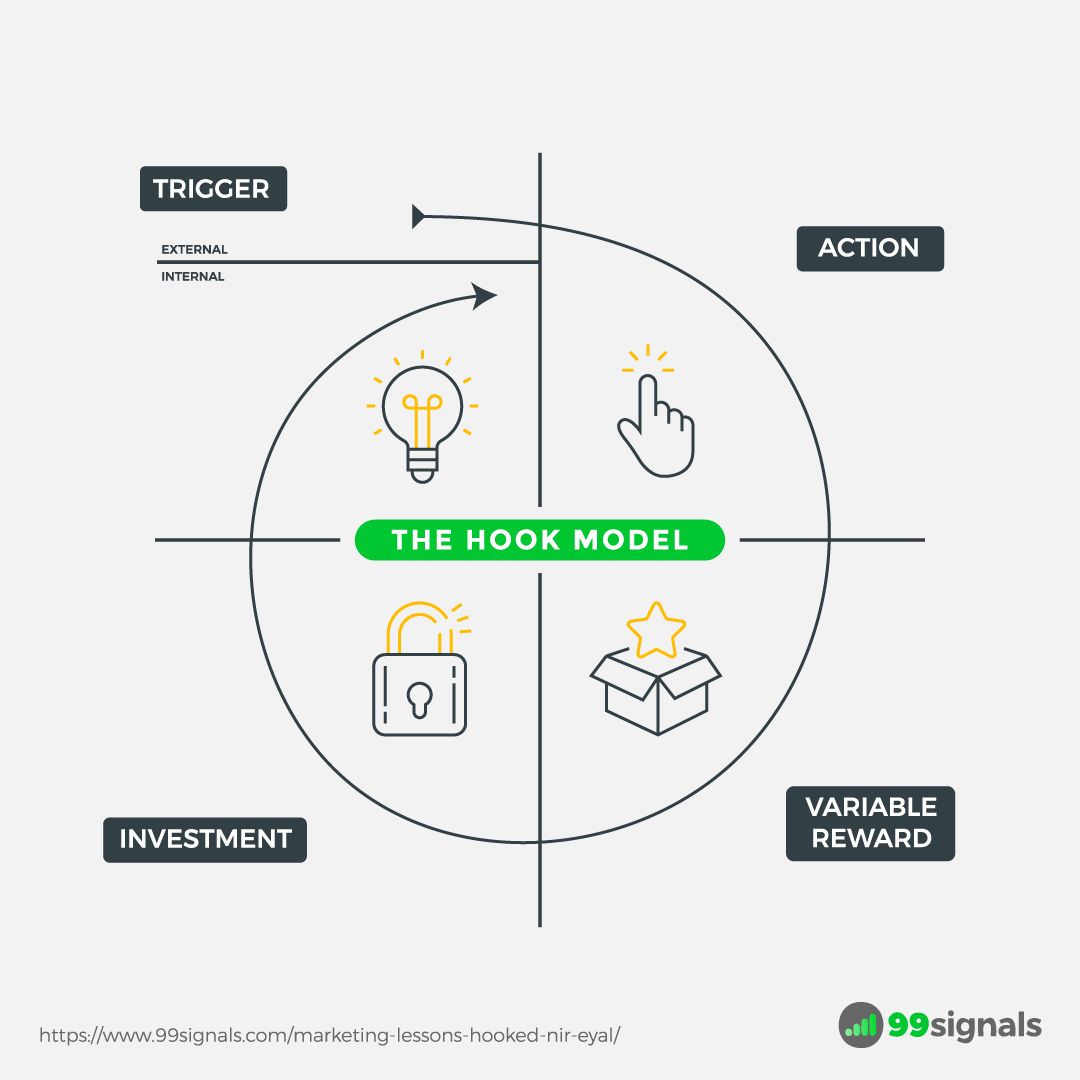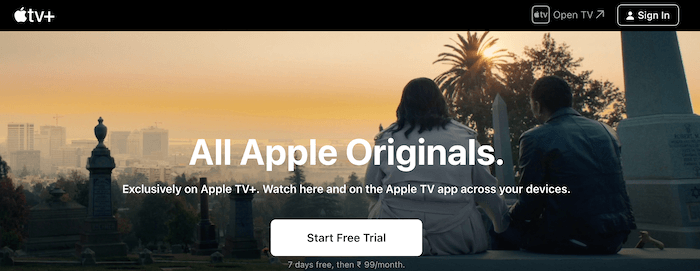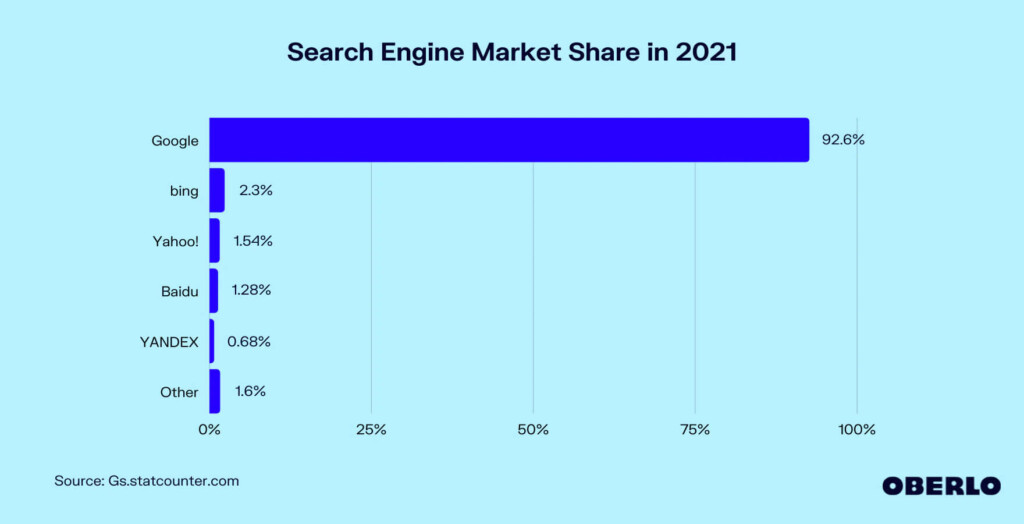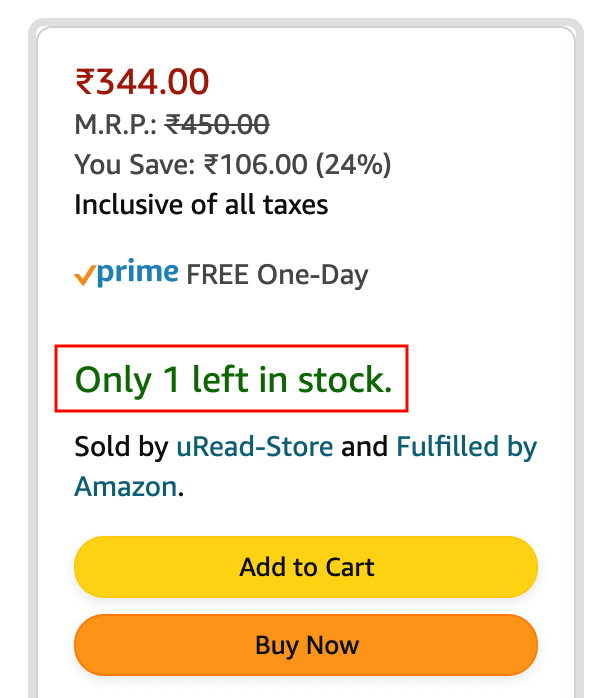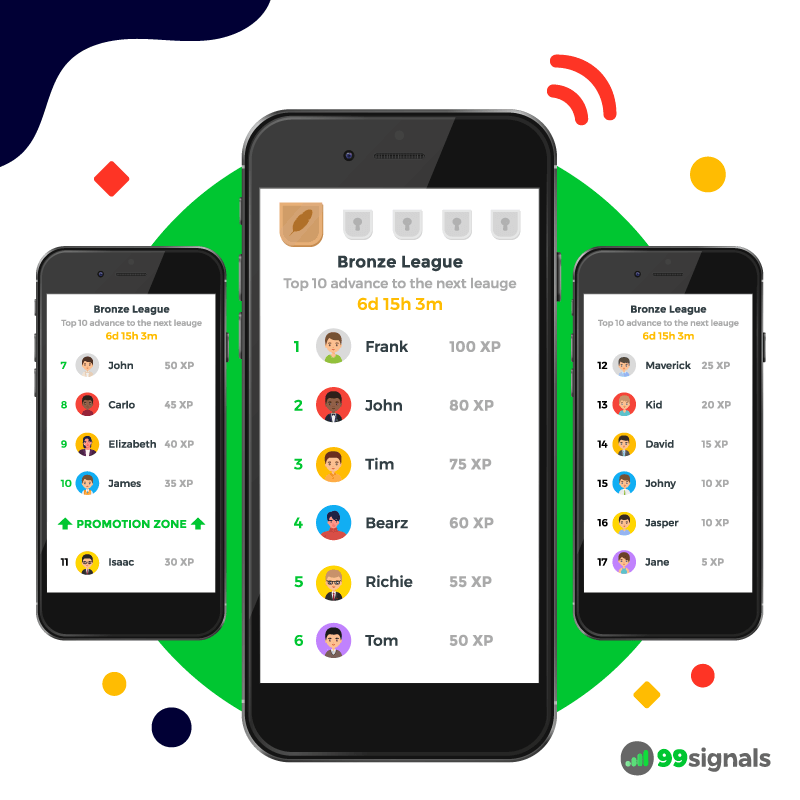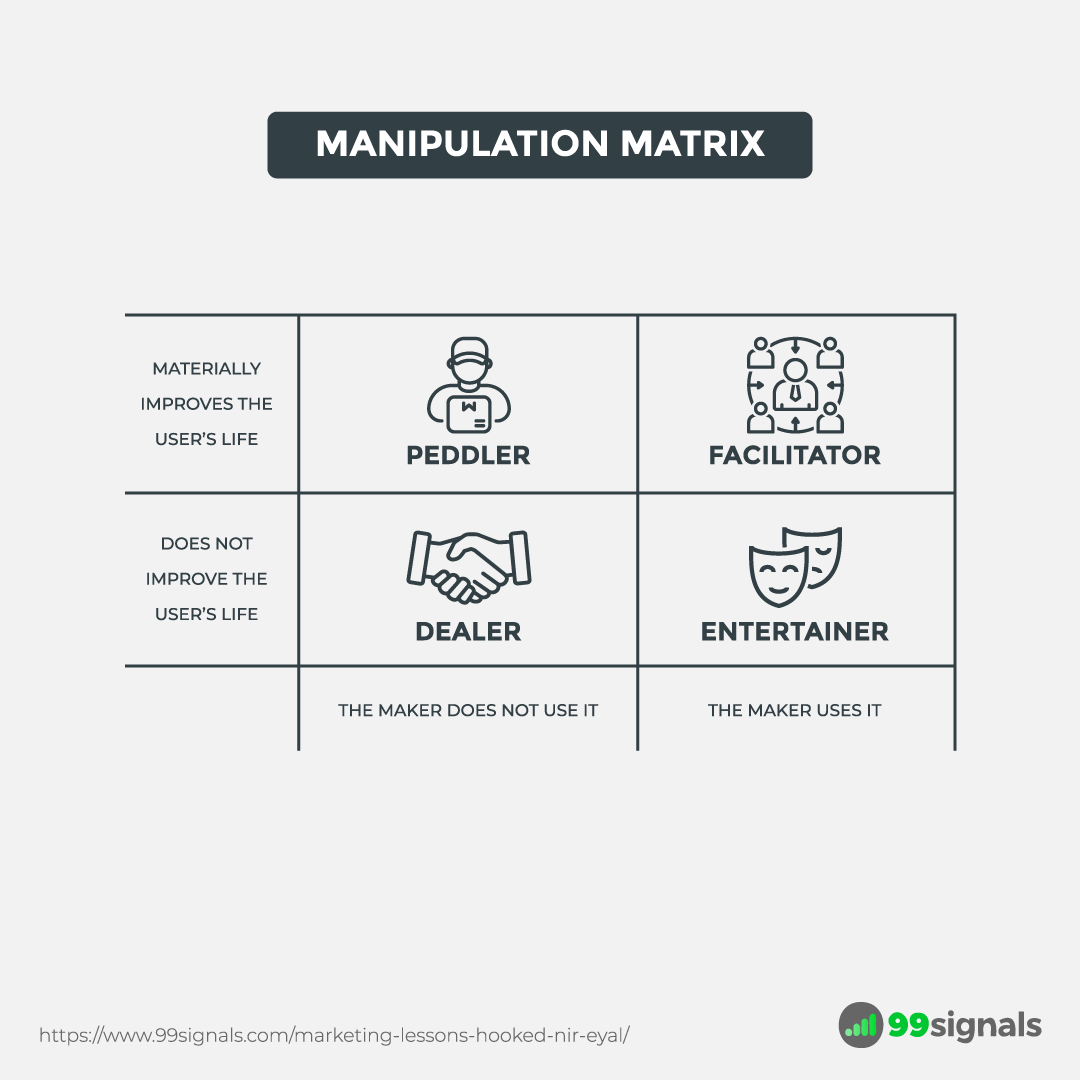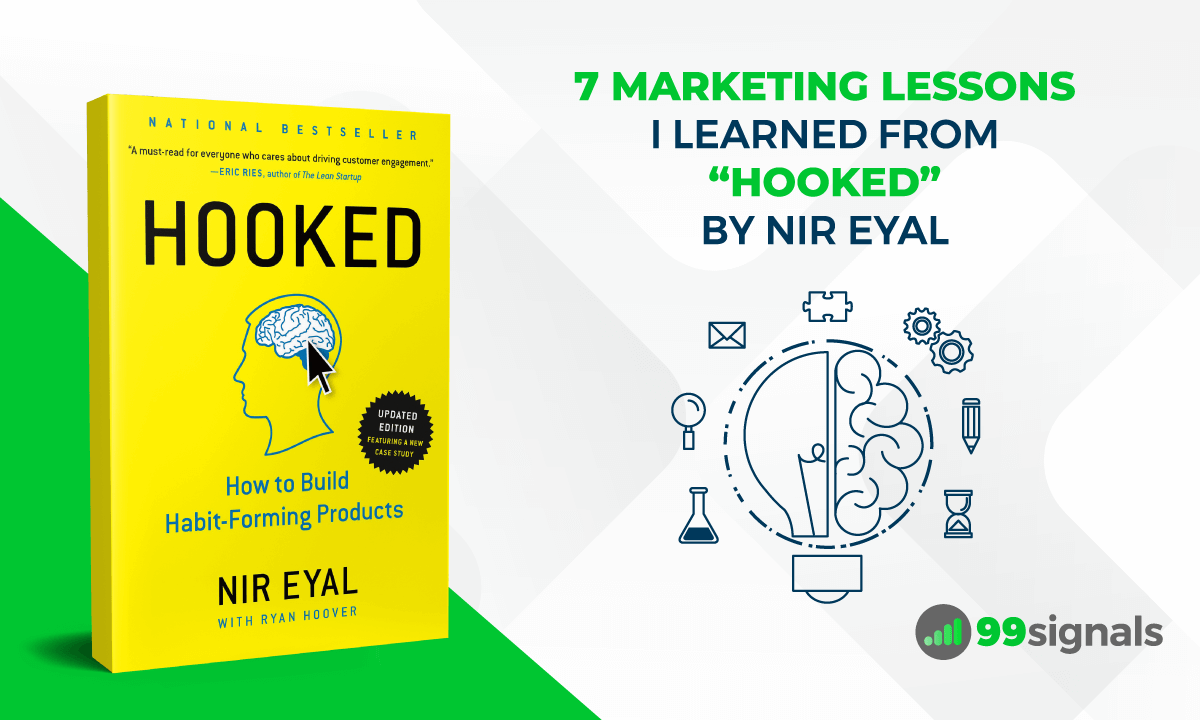Why do some products capture public’s imagination while others fizzle out of public consciousness? How do some products and services become a part of our daily routines? Is there an underlying process that companies follow to create successful habit-forming products like Instagram, Candy Crush, and Netflix? Nir Eyal has the answers to all these questions and more in his groundbreaking book Hooked. Originally published in 2013, Hooked is arguably one of the best marketing books ever written. It’s a must-read business book for all marketers, product designers, and business owners.
Based on Eyal’s years of research, consulting, and practical experience, the book dives deep into the Hook Model, a four-step process used by successful companies to create habit-forming products. Eyal deconstructs the subtle tactics used by companies like Apple, Facebook (now Meta), Pinterest, and many more to link their products to their users’ daily routines and emotions. Anchored around the Hook Model and filled with fascinating examples and anecdotes, Eyal’s book doesn’t just reveal the secrets behind building better products, but also the moral implications involved in creating highly addictive products. As I share before every article in my “Book Lessons” series, I’d be doing a massive injustice to the book if I were to summarize its content in this compressed blog post. Please treat these lessons below as highlights or my key takeaways from the book. I’d urge you to pick up a copy of Hooked to get a deeper understanding of the Hook model and how successful companies leverage it to create products used habitually by customers. In the meantime, here are 7 of the most important marketing lessons I learned from Nir Eyal’s Hooked.
How the Hook Model Works
Before I delve into the marketing lessons I learned from Hooked, it’s important to understand the methodology that the book is based on. And that methodology is the Hook Model.
How the Hook Model Works1. Trigger2. Action3. Variable Reward4. Investment7 Marketing Lessons from Hooked by Nir Eyal1. All habit-forming products use the Hook Model2. Habits are good for business1. Habits increase Customer Lifetime Value (CLTV)2. Habits provide pricing flexibility3. Habits supercharge growth4. Habits sharpen the competitive edge3. Successful companies understand users’ triggers4. The importance of heuristics in product design1. The Scarcity Heuristic2. The Framing Heuristic3. The Anchoring Heuristic4. The Endowed Progress Heuristic5. Companies use gamification with varying success6. The IKEA effect7. Understanding the Manipulation Matrix1. The Facilitator2. The Peddler3. The Entertainer4. The DealerFinal Thoughts on Hooked by Nir Eyal
Here’s a quick preview of what the Hook Model looks like:
Let’s quickly deconstruct the Hook Model:
1. Trigger
A trigger cues the user to take action. Triggers come in two types: external and internal. External triggers tell the users what to do next by placing information within the user’s environment. Examples include emails, website links, or the app icon on your smartphone. Take a look at the big “Start Free Trial” button on Apple TV+. This is an external trigger.
Internal triggers occur when a product becomes closely associated with a thought, an emotion, or a preexisting routine. Negative emotions like boredom, loneliness, frustration, and indecisiveness are powerful internal triggers and habit-forming products leverage these internal triggers by connecting these emotions to their products. Think about the last time you were bored and binge-watched the entire season of a show on Netflix. Ring a bell? You were just cued by an internal trigger.
New habits always begin with an external trigger, but are sustained for a long period of time through internal triggers. In other words, it’s the internal triggers that keep users hooked.
2. Action
Action is the behavior done in anticipation of a reward. A simple action like clicking on the “Get Started” button enables you to create an account on Netflix where you can check out the wide collection of movies and TV shows on the world’s favorite streaming service.
3. Variable Reward
If you’d like users to use your product frequently, then it must deliver what it promises. In other words, you need to offer them a reward for their actions. But a predictable reward isn’t enough to keep users hooked to the product. It needs to be unpredictable. Studies show that the unpredictability involved in variable rewards serves as a much bigger motivation for users to keep using the product. Put differently, it’s not the reward that keeps users hooked to a particular product. It’s the anticipation of a reward. Bottom line? The reward needs to have an element of unpredictability. Imagine if Netflix had movies and shows from just one genre. What if they didn’t have Netflix Original shows or refused to add new movies to their collection? Would you still renew your Netflix subscription every month? Unlikely!
4. Investment
Investment occurs when the user puts something into the product such as time, effort, or money. The more time and effort that users invest into a product, the more they value it. The investment phase increases the chances that the user will go through the Hook cycle in the future. Inviting friends to use the product, stating preferences, and learning new features are all investments that users make in a product to improve their experience. The IKEA effect, which we will explore in detail shortly, is a great example of the investment phase. Another example is Netflix’s “My List” feature, which allows you to create a watch list of movies and TV shows.
7 Marketing Lessons from Hooked by Nir Eyal
1. All habit-forming products use the Hook Model
Companies behind habit-forming products like Facebook, Pinterest, YouTube, iPhone, and several others use the Hook Model to stay relevant in users’ minds. These companies attach their products to internal triggers. Throughout the book, Nir Eyal provides different examples of habit-forming products and services that change user behavior and create unprompted user engagement. These companies have mastered habit-forming product design. Google’s search engine is perhaps the best example of a habit-forming product. Google commands a global market share of over 90%.
Image Credit: Oberlo Why is it that more Google users haven’t migrated to rival search engines like Bing or DuckDuckGo? Because Google is a habit-forming product. And habits keep users loyal. If a user is familiar with Google’s interface, switching to Bing would require a lot of cognitive effort. Even if Bing’s technology and features were superior, adapting to its interface would take time for new users who have just migrated from Google. As a result, Google has such a stranglehold on the search engine market and Bing is the subject of widespread internet memes. So in order to create a product that’s used frequently by your customers, you need to master the art of habit-forming product design, which incorporates the Hook Model.
2. Habits are good for business
Habits are great for the bottom line of companies that are able to harness the power of habits in an effective way. In the book, before diving into the mechanics of habit formation, Eyal helps us understand the importance and benefits of habits from a business perspective. Here are some of the ways in which habits are good for business:
1. Habits increase Customer Lifetime Value (CLTV)
Customer lifetime value (CLTV) is a metric that indicates the total worth of a customer to a business over the period of their relationship. Put differently, CLTV is the amount of money you make from a customer before he/she switches to a competitor. Habits increase how long and how frequently customers use a product, resulting in higher CLTV.
2. Habits provide pricing flexibility
Habits give companies greater flexibility to increase prices. Eyal provides the examples of Candy Crush and Evernote to illustrate this point. Both these apps follow a “freemium” model. In the case of Candy Crush, some of the users who’ve been playing the mobile game for free end up being paid customers, netting the company millions of dollars. Similarly, loyal Evernote users typically upgrade to the paid version to use advanced features like calendar integration, increased note size, and more.
3. Habits supercharge growth
Users who are hooked to a particular product are more likely to tell their friends about it. In other words, they become brand evangelists, bringing in new users at no cost. To elaborate on this, Eyal provides the example of Facebook which beat established social media platforms like MySpace and Friendster because of higher user engagement despite being late to the social networking game.
4. Habits sharpen the competitive edge
As the saying goes, “old habits die hard.” For new entrants to stand a chance against existing solutions, they need to build products that are not just marginally better, but substantially better and superior in every way. Which is why user habits can be such a potent competitive advantage. When you combine these four benefits, it’s easy to see why habits are good for business and why it’s worth investing your time and resources to build habit-forming products.
3. Successful companies understand users’ triggers
Successful companies have a deep understanding of users’ internal and external triggers. To demonstrate this, Eyal attributes a large component of Instagram’s success to the company’s ability to understand its users’ triggers. In the book, Eyal deconstructs Instagram’s triggers and shows us how the app benefits from both internal and external triggers. Most users who are habitually using Instagram start using it because of an external trigger — a recommendation from a friend, media, or bloggers. But with repeated use of the service, Instagram forms strong internal triggers with the users. The fear of missing out on capturing a special moment that leads to stress is an internal trigger. It’s this pang of stress that keeps bringing users back to Instagram to share their special moments with their audience. So in order to create a habit-forming product, you need to understand which user emotions are tied to internal triggers and know how to leverage external triggers to drive the user to action.
4. The importance of heuristics in product design
Heuristics are the mental shortcuts we take to make quick decisions and form opinions. Companies typically use a plethora of heuristics to increase engagement, but Eyal shares four of the most important heuristics in the book:
1. The Scarcity Heuristic
In this scenario, the appearance of scarcity affects the perceived value of a product or service. Scarcity, or perceived scarcity, of a product may discreetly signal the popularity of the product. It may also trigger the dreaded fear of missing out (FOMO) feeling.
Case in point:
2. The Framing Heuristic
In this scenario, context shapes the perceived value of a product or service. To illustrate this heuristic in action, Eyal shares the example of world-class violinist Joshua Bell’s popular social experiment. Typically, a ticket to Bell’s concert costs hundreds of dollars. Venues like Kennedy Center and Carnagie Hall are packed with his fans. But when Bell played his violin for free in a busy subway station, very few people stopped to listen to his music. You can check out the experiment here:
This is the framing heuristic in action. It doesn’t just influence our behavior, but it also changes how our brain perceives pleasure.
3. The Anchoring Heuristic
In this scenario, people often anchor to one piece of information when making a decision. If you’ve ever walked into a clothing store with a signage of “Up to 50% off” or “Buy one, get one free”, you’ve been exposed to the anchoring heuristic. In this scenario, even if we stumble upon better, less expensive (yet not discounted) products in the same store, we may end up buying products which are on sale because we have been influenced by the anchor of “50% off”.
4. The Endowed Progress Heuristic
This is a phenomenon that increases motivation as people believe they are nearing a goal. An example of this heuristic in action is how LinkedIn prompts its users to share more information about themselves with the Profile Strength meter. The more information and content you add to your profile, the more strength your LinkedIn profile gains. The ultimate goal is to reach the LinkedIn All-Star status.
5. Companies use gamification with varying success
Gamification is the use of game-like elements in non-game environments. The use of points, badges, and leaderboards are examples of companies using gamification to increase user engagement. But gamification is not a magical solution that will automatically drive user engagement. And when it comes to successful implementation of gamification, some companies do it better than others. Gamification can enhance the features of a product if it’s already delivering value to its users. On the other hand, if a product fails to hook users at the basic level, no amount of gamification can save the product from impending doom. As Eyal points out, if there’s a mismatch between the customer’s problem and the company’s assumed solution, adding game mechanics to the product will not make it instantly more attractive. That said, there are companies that are using gamification to great effect. Duolingo is an excellent example of an app that utilizes gamification to drive engagement among language learners.
Duolingo’s game mechanics like XP points, leaderboards, and leagues target different types of users to keep them hooked to the app.
6. The IKEA effect
IKEA, the world’s largest furniture retailer, follows a unique approach to sell its furniture products. Instead of selling preassembled furniture, IKEA puts its customers to work by making them assemble the furniture themselves. In addition to decreased labor costs and optimized distribution efficiency, there is a hidden benefit to making people assemble their own furniture — customers develop an irrational love for the furniture they built. As a result, they assign a greater value to it. This cognitive bias is called the IKEA effect. Businesses that include DIY elements in their products can place a higher value to them because of the investment users have made in the products through their labor. Companies like Basecamp, iDoneThis, and Wistia have employed the IKEA effect in their onboarding process to increase a new user’s commitment in their product.
7. Understanding the Manipulation Matrix
The Hook Model can be used to build remarkable products that seamlessly integrate into our daily routines. But as you may have rightly guessed by now, it can also be a recipe for manipulation. Since it involves changing people’s behaviors, you should use it responsibly. How? Eyal proposes using the Manipulation Matrix as a guide. Manipulation Matrix is a decision-support tool that entrepreneurs can use long before they launch their product. Here’s a quick look at the Manipulation Matrix:
To use the Manipulation Matrix, you need to ask yourself two questions: Your answer to these two questions will determine where you fall on the Manipulation Matrix. Let’s take a quick look at each of the creators who represent the four quadrants in the Manipulation Matrix:
1. The Facilitator
If your answer to both these questions is yes, then that means your product is facilitating a healthy habit. Facilitators have the highest chance of success because they truly understand the needs of their users.
2. The Peddler
If you believe your product can materially improve users’ lives but have no intention of personally using it yourself, then you fall into this quadrant. While there’s nothing wrong in launching a product when you’re in this quadrant, the odds of success are very low because you’re designing products for a user you don’t know extremely well.
3. The Entertainer
Entertainers use their product but don’t believe it can enhance users’ lives. If your product falls into this category, then it can indeed be successful, but its success will be short-lived. Games like FarmVille and Angry Birds are classic examples of products that fit this category.
4. The Dealer
Dealers are the worst of the lot. They neither believe in their product nor use it themselves. If your product falls in this category, you’re simply exploiting users to earn a quick buck. So these are the four quadrants in the Manipulation Matrix. If you’re creating a habit-forming product, it’s important to assess the morality behind the techniques you’ll use to manipulate users. The Manipulation Matrix helps you determine which of the four categories your product fits into. It helps you decide whether it’s the right move to push forward with the launch or hold back and make changes to the product before it’s finally released to the general public. The Manipulation Matrix is a reminder to creators and innovators to consider the implications of the products they build.
Final Thoughts on Hooked by Nir Eyal
If you’re planning to launch a new product, you need to stop everything and grab a copy Hooked right now. As I mentioned at the start, Nir Eyal’s Hooked is required reading for all marketers, product designers, and business owners. Why? Because you’ll not just get an understanding of the process involved in creating habit-forming products, but also gain a perspective on the moral implications of launching a product that has your users hooked. Successful companies and apps like Apple, Google, Facebook, Pinterest, Candy Crush, and many more are using the four-step Hook model to get people to use their products over and over again. Once you’re done with the book, you too will learn the exact techniques involved in building highly addictive products. You’ll also discover where you fall on the Manipulation Matrix and figure out whether it’s morally right to release your product to the market. Have you read Hooked by Nir Eyal? What lessons were you able to pick from this book? Please share your thoughts in the comments section below. I’d love to hear from you. If you liked this article, please share it on Twitter using the link below:
7 Marketing Lessons I Learned from “All Marketers Are Liars” by Seth Godin 85+ Best Books for Entrepreneurs and Business Owners 21 Movies Every Entrepreneur Should Watch for Inspiration 7 Business Lessons I Learned from “Rework” by Jason Fried & David Heinemeier Hansson 15 Best Marketing YouTube Channels (That Are Worth Subscribing To)
